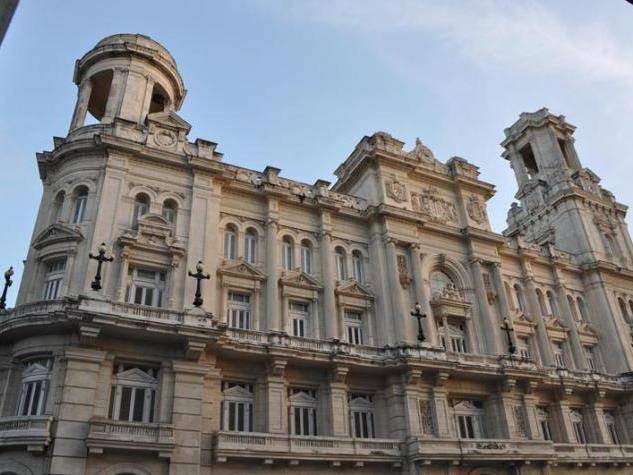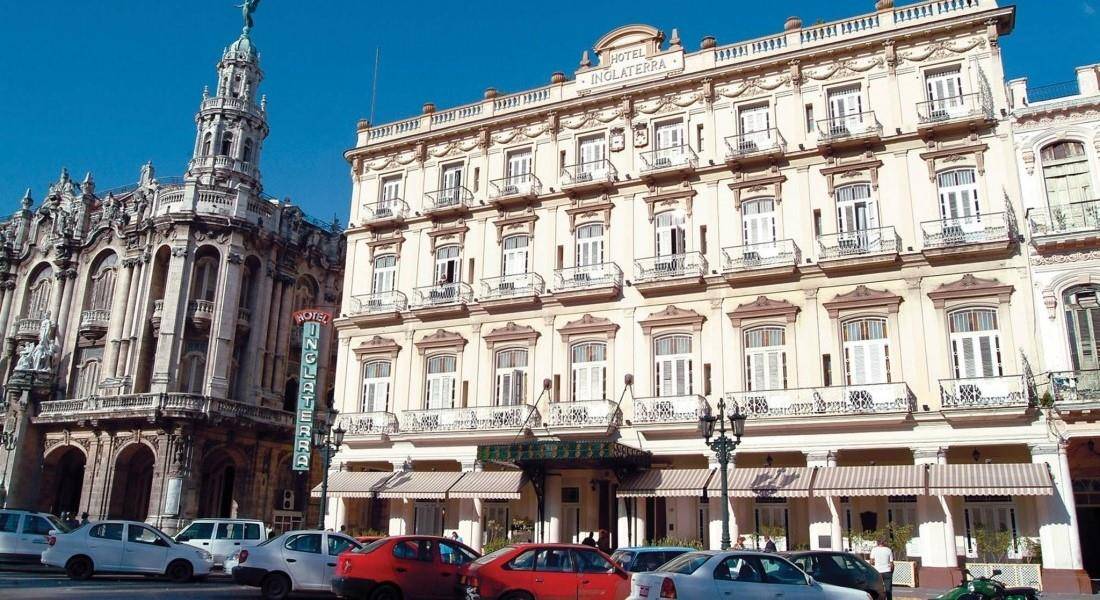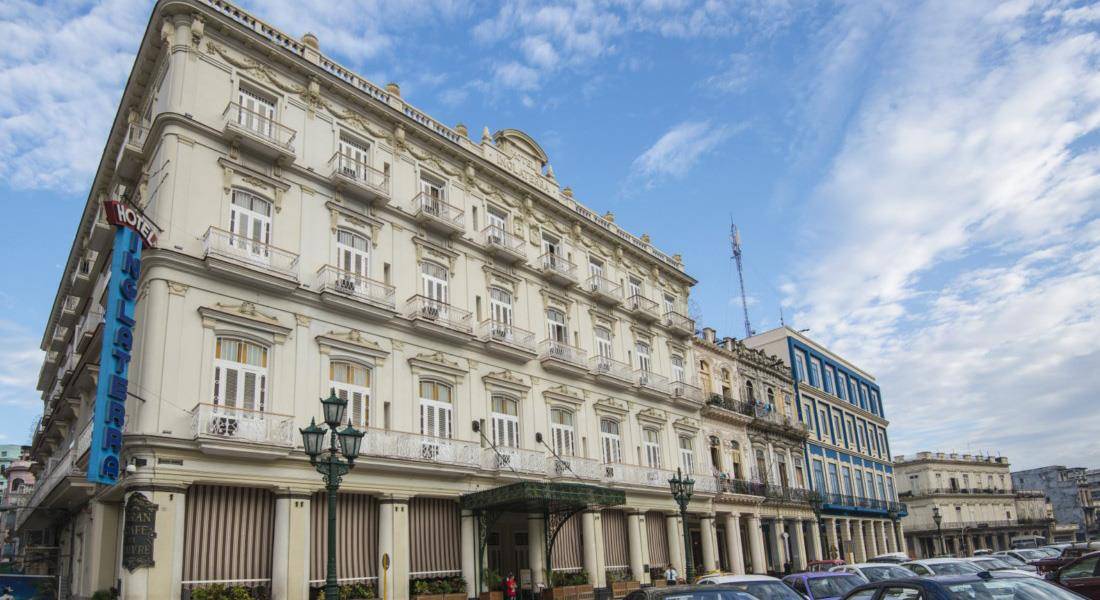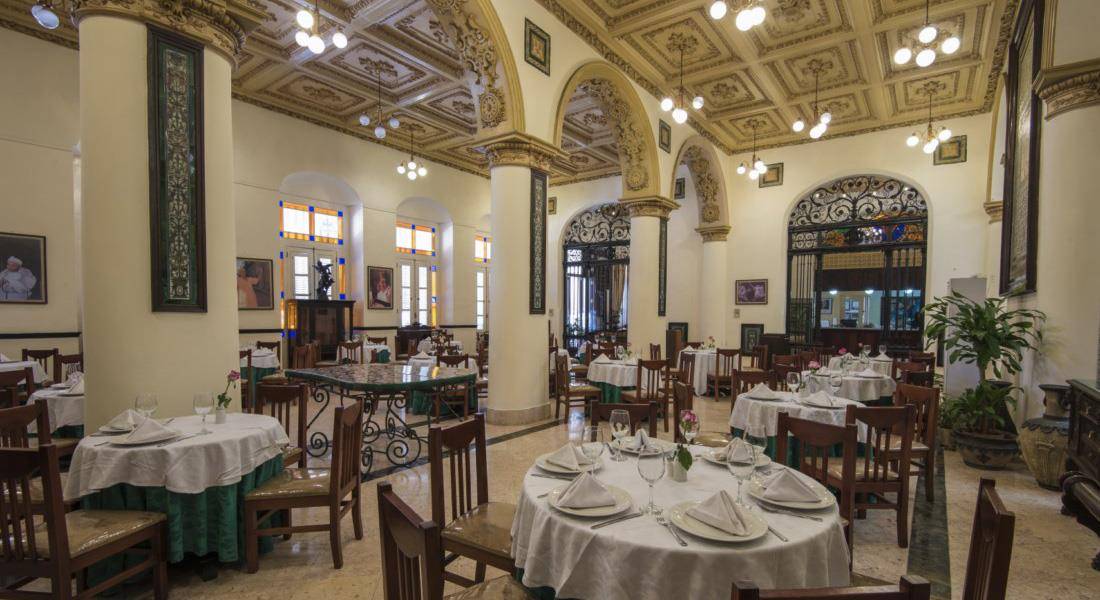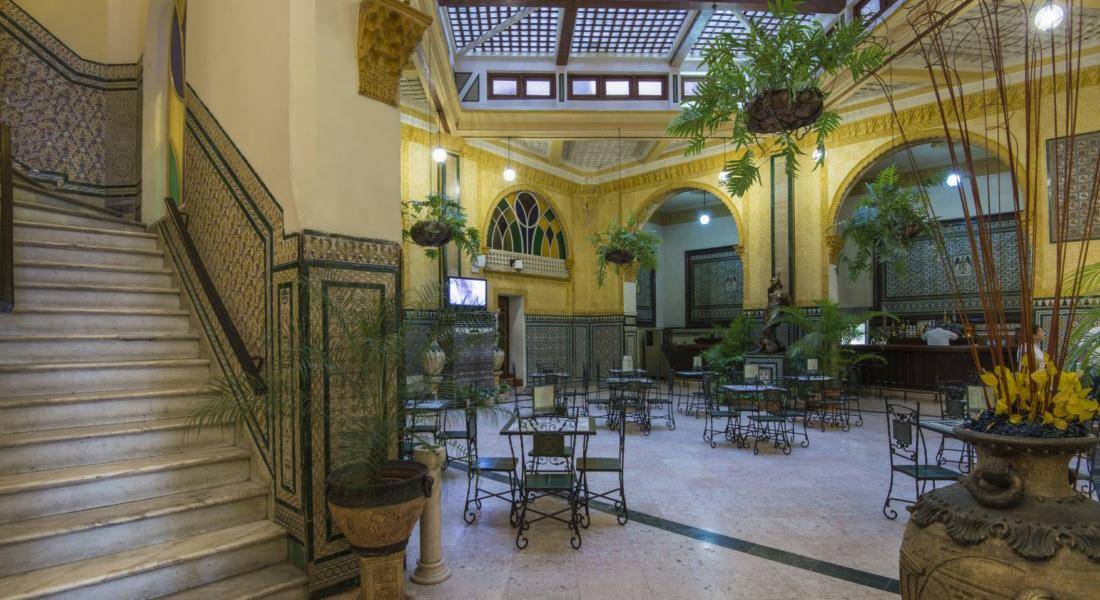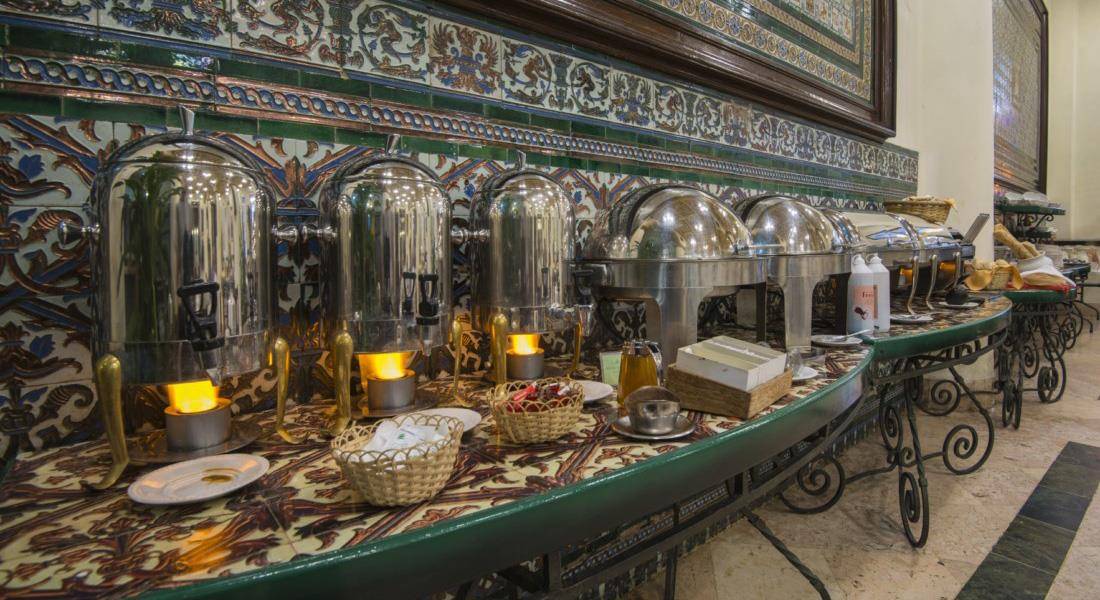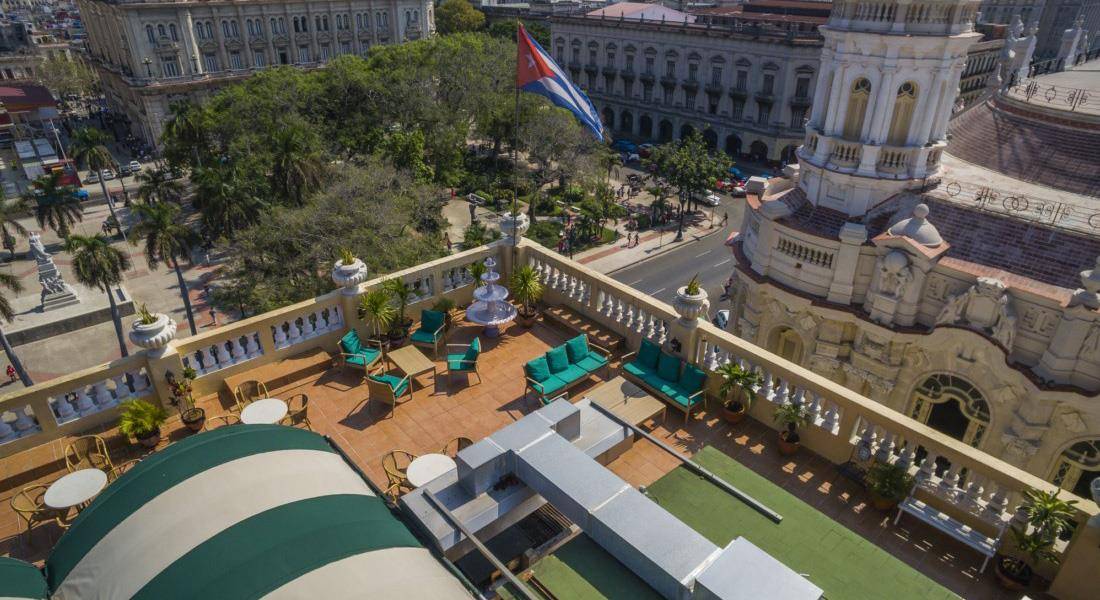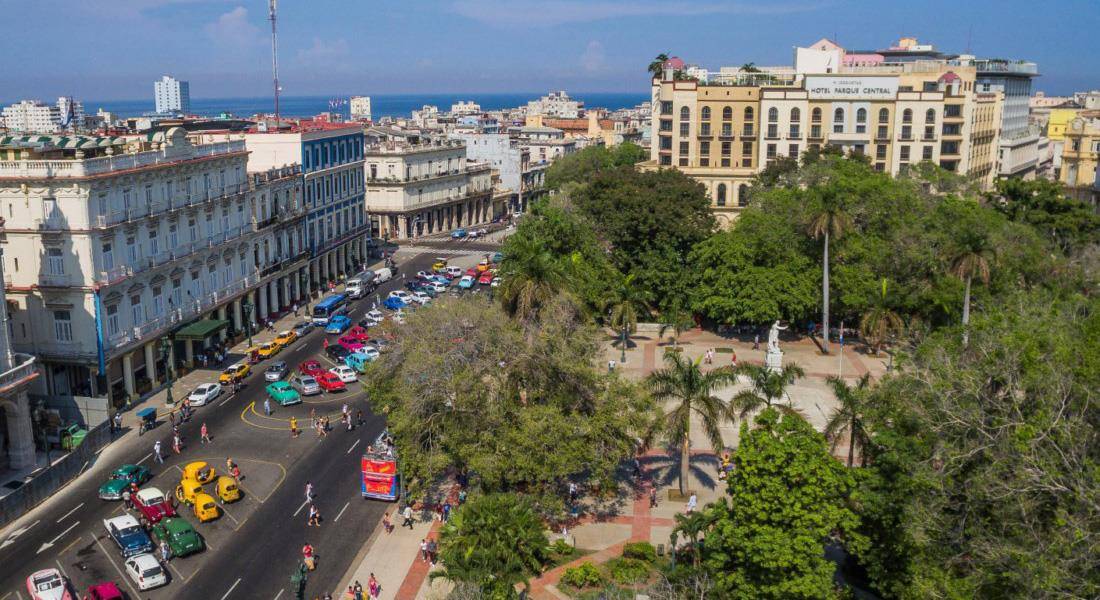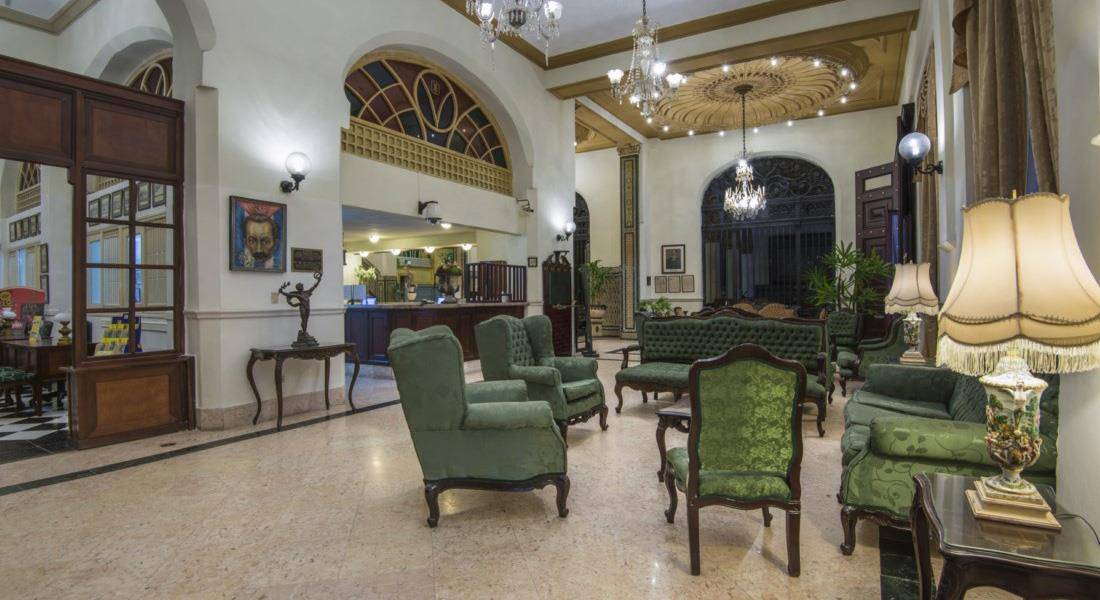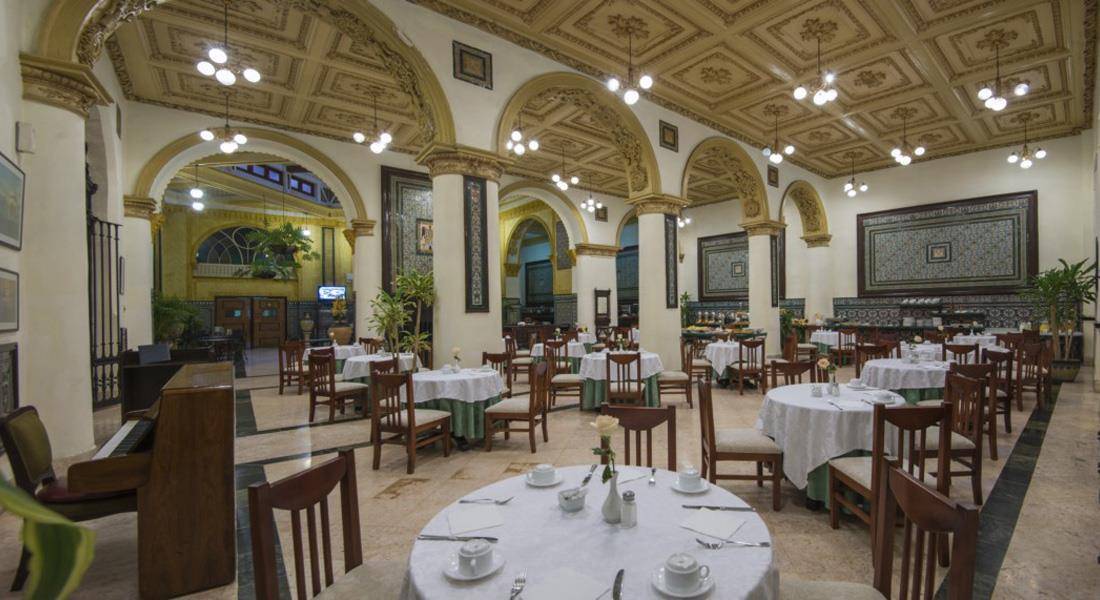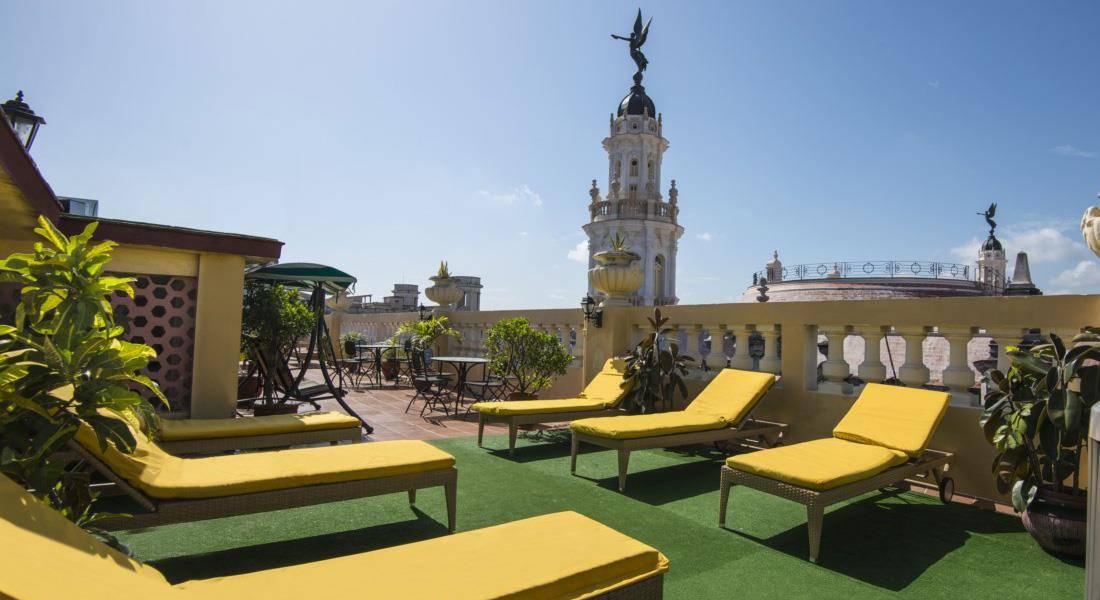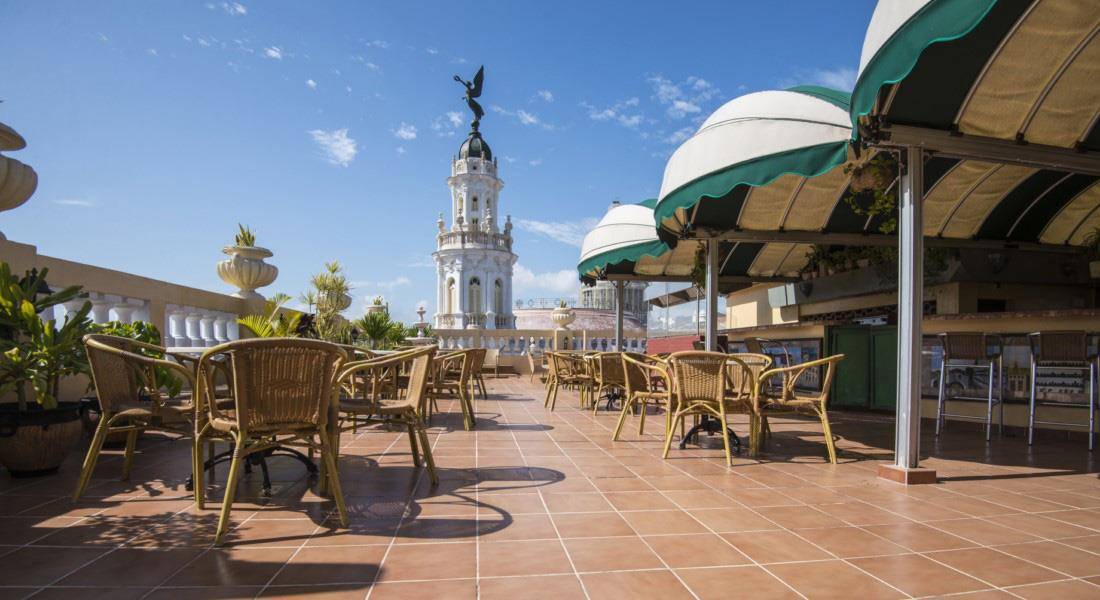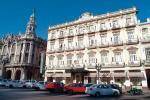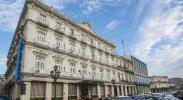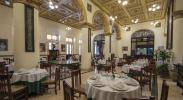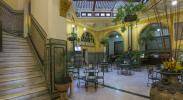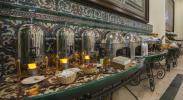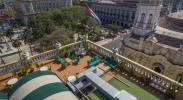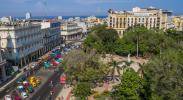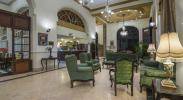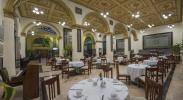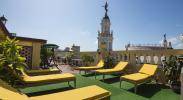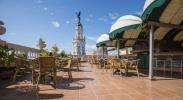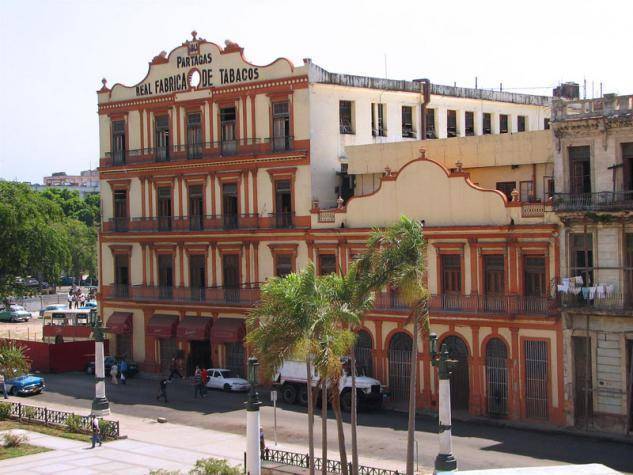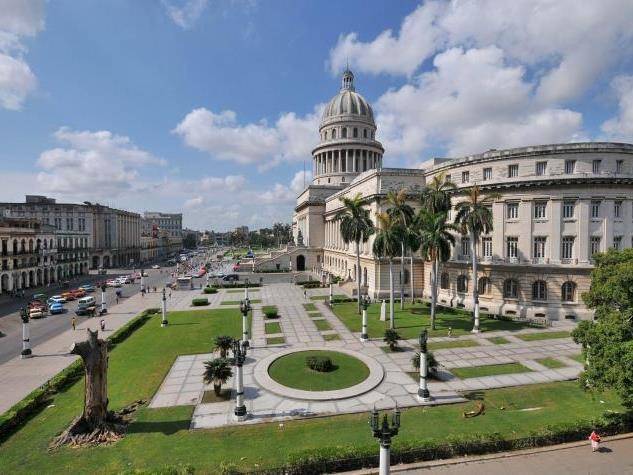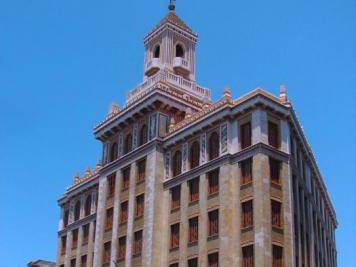About
Inglaterra
The Inglaterra opened in 1875 and has been one of the preferred hotels in the heart of downtown Havana ever since. Famous past guests include José Martí and Anna Pavlova – will you be next to sign the guest book?
The Inglaterra’s animated and dynamic sidewalk café, the Gran Café el Louvre, has hosted musicians, travelers, poets, professors and visitors of all stripes for over a century. Pull up one of the cast iron chairs to linger for an hour (or three) listening to live music and watching the kinetic street scene unfold.
While Inglaterra means England (for those who didn’t know), it’s rather a fusion of several cultural influences. Consider the restaurant El Colonial, (where breakfast is served) opposite the horseshoe-shaped reception area, with its neoclassical style. On the left, the bar-café La Sevillana, is another inviting spot to while away an hour or two. This whole section is attractively paneled with ceramic tiles from Seville in rich patterns and colors, complemented by ornately carved archways and molding. The entire area feels like it could be in Morocco, rather than Cuba.
But don’t only explore downstairs, for a real treat awaits at the top of the hotel. The Inglaterra’s rooftop terrace, featuring a bar/grill, is consistently ranked as a top Havana experience. During the day, enjoy the Jacuzzi and sun beds in the solarium; at night, have some cocktails accompanied by live music. Needless to say, the view from here is fabulous.
